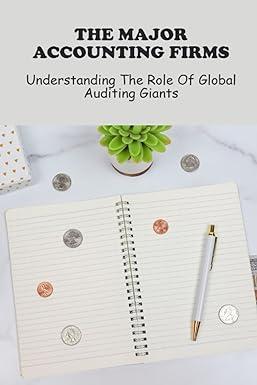Question
61 months of total return for a sample of asset classes are contained in the Project.xlsx spreadsheet available on Moodle. The asset classes are: Asset
61 months of total return for a sample of asset classes are contained in the Project.xlsx spreadsheet available on Moodle. The asset classes are: Asset Class Name Asset Class Description ASX300 S&P/ASX300 Index Australian Equity Index AUBD Bloomberg Australian Investment Grade Corporate Bond Index CASH Australian Bank Bill Index Cash USBD Barclays US Corporate Bond Index S&P500 S&P500 US Equity Index NKY Nikkei 225 Japanese Equity Index EMEQ MSCI Emerging Markets Equity Index EMBD Bloomberg Emerging Markets Bond Index Assume that utility functions are of the form: U = E(R) A 2 . There are three different types of investors that correspond to the investment options offered by superannuation funds. The Conservative investor has a risk aversion coefficient (A) of 12. The Balanced investor has a risk aversion coefficient of 7 and the High Growth investor has a risk-aversion coefficient of 2. Investors are unable to short-sell the asset classes and are not allowed to borrow or lend at a risk- free rate. They can invest in the Australian Bank Bill Index (CASH), which is a close substitute for the riskfree rate, but it is not a risk-free asset. The expected return of each asset class is given in the table below (do not estimate them from the historical data). You are required to use all of the historical data provided to estimate the covariance matrix so that you can construct portfolios using the Markowitz approach. Asset Class ASX300 AUBD CASH USBD S&P500 NKY EMEQ EMBD Expected Returns 0.47% 0.35% 0.35% 0.48% 0.50% 0.35% 0.50% 0.40%
Domestic Portfolio
Initially each of the three investor portfolios can only include Australian assets: ASX300, AUBD and CASH. What are the weights in the optimal risky portfolio for each of the three investors? How do each of the three investors benefit from the shift to an optimal risky portfolio from a portfolio that has 50% invested in the ASX300 index and 50% invested in the AUBD index? Discuss the differences in the asset class weights within each of three investor portfolios as well as the differences between each investors portfolios. Why do these differences exist? Do these differences make sense?
International Portfolio
Now the three investor portfolios are allowed to contain investments in any of the eight asset classes. What are the weights in the optimal risky portfolio for each of the three investors? Discuss the differences in the asset class weights within each of three investor portfolios as well as the differences between each investors portfolios. Why do these differences exist? Do these differences make sense? What is the benefit to each of three investor types from allowing overseas investments? Which investor type benefitted the most? Why?
Minimum Variance Portfolio
What are the weights in the minimum variance portfolio? Discuss the differences in the weights for this portfolio. Which investor is most adversely affected by having to hold the minimum variance portfolio compared to their optimal risky portfolio?
Step by Step Solution
There are 3 Steps involved in it
Step: 1

Get Instant Access to Expert-Tailored Solutions
See step-by-step solutions with expert insights and AI powered tools for academic success
Step: 2

Step: 3

Ace Your Homework with AI
Get the answers you need in no time with our AI-driven, step-by-step assistance
Get Started


